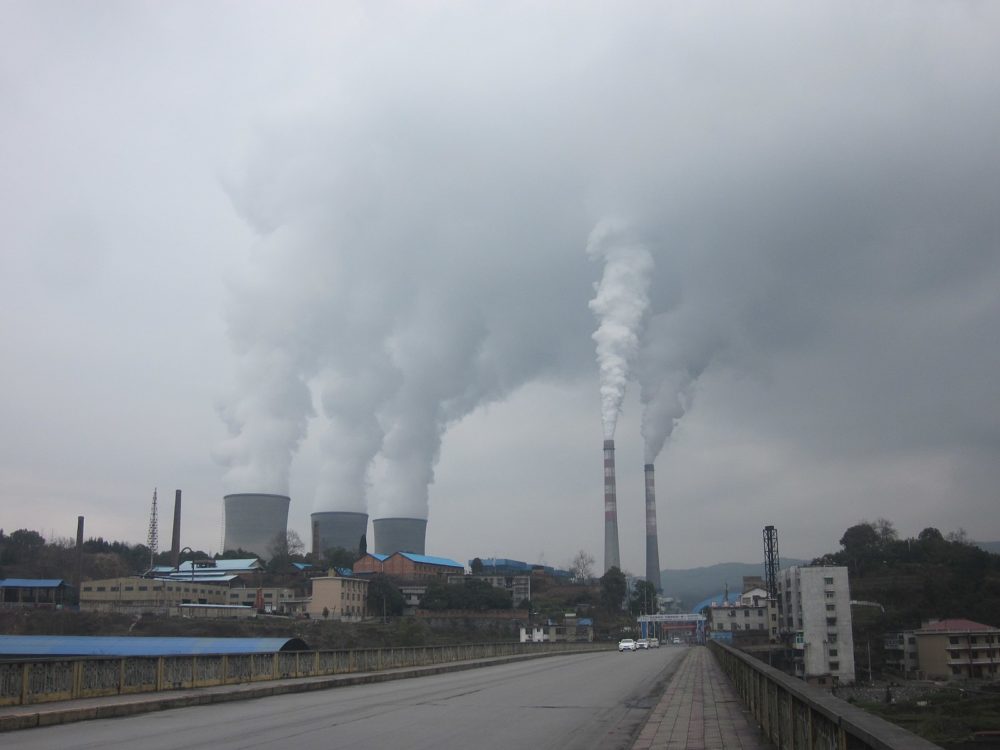
The coronavirus pandemic is set to delay the launch of the national carbon market in China, according to an industry analyst.
The virus, which surfaced in December in Wuhan, China, is expected to derail years’ worth of efforts to establish the country’s national Emissions Trading System (ETS) by the end of 2020.
The Chinese government ordered firms from the oil, chemicals, construction materials, steel, nonferrous metals, papermaking, electric power and shipping sectors to submit their CO2 emission’s data before the end of March in preparation for the launch.
The ETS is aiming to cover eight billion tonnes of carbon dioxide emissions a year from about 100,000 industrial plants once implemented.
Coronavirus could be set to delay the carbon market’s implementation
But Somik Das, senior power analyst at data and analytics firm GlobalData, said the pandemic has “prevented officials from conducting the verification process of the companies reporting the emissions data”.
“In April, the province of Guangdong had pushed back its annual compliance deadline for companies by two months in its emissions trading scheme, giving companies more time to finalise their 2019 data verification,” he added.
“Hence, further delays would only push back the establishment of the market and raise doubts over the possibility of meeting the deadline.”
Das believes China’s carbon market has the potential to become the largest of its kind and will help drive down its high emission levels.
But he claims “institutional delays” and the outbreak of Covid-19 is expected to “give rise to hurdles that would affect the pace and timing of the implementation of the national market”.
“Although several institutional delays were witnessed during the implementation phase, the outbreak of coronavirus will give rise to additional political and regulatory hurdles that are expected to affect the pace and timing of the national market implementation.”
What China’s Emissions Trading System could mean for global emissions
Once the ETS is imposed, it could have a significant impact on global emissions, as China accounts for more than a quarter of all CO2 produced, excluding emissions from land-use changes such as deforestation.
The nation’s emissions grew by 1.6% in 2018 to reach a high of 13.7 gigatonnes (Gt) of CO2 equivalent, despite the 2015 Paris Agreement’s target of reducing global emissions to below 25Gt by 2030 to reach the 2050 1.5C temperature goal.

But China is set to achieve its 2030 nationally determined contribution (NDC) agreement under the Paris Agreement up to nine years early, according to research by Nature Sustainability.
The official target was to reach peak CO2 levels by 2030, which it is expected to hit between 2021 and 2025 — with plans in place for it to increase its NDC target this year.
As clean technologies look set to shape the future of the world’s energy mix, China has placed itself in a powerful position as the global leader in renewable energy capacity at 728 gigawatts (GW) of renewable power — mainly from hydroelectric and wind sources.
Despite its growth in clean technologies, and the UN stating the world must cut coal-fired electricity by two-thirds in the next decade — China is continuing to invest in the fossil fuel.
The country has about 1,000GW of existing capacity, along with 121GW of coal plants currently under construction – with the fuel making up more than 60% of its energy mix in 2019.
What the 14th five-year plan could mean for the ETS roll-out
Das claims the Chinese government seems to be taking a “softer stance on environmental accountability to lower the cost burden on business and spur economic activity, which could see a delay in the integration of businesses into the carbon market”.
But the nation’s 14th five-year plan, covering 2021-2025, is to be unveiled later this year and will detail how it plans to cut carbon emissions as part of its transition to a greener economy.
With that in mind, Das believes it is likely that “new market structures will be established to accelerate the national ETS rollout with flexible measures introduced to not compromise on economic growth”.






